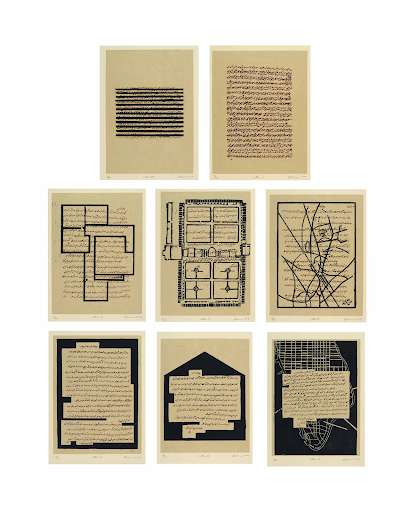Indian-American zarina artist Zarina Hashmi (simplified to Zarina) developed a lifetime conversation between art, memory, and the concept of home. Zarina was born in 1937 in Aligarh, India. She saw the world and resided in numerous cities—Bangkok, Tokyo, Delhi, Paris, Los Angeles, and New York. However, the notion of belonging and the quest for an honest home accompanied her wherever she went. Her minimalist art, created through paper sculptures, woodblock prints, and fragile lines, talked of migration, exile, and individuality.
Zarina once remarked: "I do not feel at home anywhere, but the idea of home follows me wherever I go." This remark encapsulates her life journey and her artistic vision. Today, the art world recalls zarina artist not just for her technique and refinement but also for her capability to infuse emotional depth within Minimalism.
Early Life and Influences
Zarina was raised in Aligarh at a tumultuous period in Indian history. She was only ten years old when she lived through the Partition of India in 1947. Partition had a lasting emotional and political impact on her. Most critics feel this experience "cut her loose from her roots and haunted her life and work.
Although she majored in mathematics as a young woman, Zarina's passion for form and space attracted her to painting. She learned printmaking with Stanley William Hayter in Paris and Toshi Yoshida in Tokyo, mastering sophisticated techniques that she later adapted to make her own. Traveling with her diplomat husband exposed her to various cultures and art movements. By the late 1970s, when she moved to New York, zarina artist already had a unique voice.
Embracing Her Style
The 1970s art scene in New York was dominated by large, brazen works of art. However, zarina artist chose to go another way. She adopted Minimalism, typically a male-dominated movement, and infused it with her own narratives of migration and exile.
She employed handmade paper, gold leaf, and woodblock prints to produce works that appeared plain on initial observation but were rich in meaning. Her paintings depicted maps, blueprints, and abstract shapes, each of which referred to memories of homelessness and yearning. In her lines, textures, and contours, Zarina conveyed the collective human quest for home.

Zarina, Letters from Home, 2004. Image from Christie’s.Key Works and Auctions
Among Zarina's most remarkable series, House with Four Walls (1991) captures her perpetual contemplation of home. Created in a residency at the Women's Studio Workshop in New York, the series brought together irregular lines and poetic prose. Each print was executed on handmade Nepalese paper and presented a disjointed narrative of family, memory, and migration.
This collection of seven prints was presented at Christie's in 2020 with an estimate of USD 12,000 – $18,000. The paintings later reached a sale price of $62,500, over three times the top estimate. This outcome not only indicated the increased interest in zarina artist but also demonstrated how South Asian women artists are appreciated more by collectors.
Another iconic work, Letters from Home (2004), superimposed personal letters by Zarina's sister over architectural images such as maps and floor plans. When put up for auction in 2014, a group of these fetched GBP 50,000 (USD 64,800), well above expectations.
Later Life and Demise
Zarina went on producing art right into her later life, even when her health was in decline. She died in 2020 following a prolonged illness. Friends, colleagues, and fans recall her warmth, intelligence, and commitment to art. South Asian art historian Dr. Mariah Lookman remembered a last night with Zarina, stating that they separated with the words "phir milenge"—we shall meet again.
Years after her death, the demand for zarina artist has only increased. Auctions in 2021 recorded works such as Memory of Bangkok selling for $68,750, beating expectations and showing that her work was still in great demand. Galleries and museums continue to honor her work, making sure her legacy lives on.
Conclusion
The story of zarina artist Zarina Hashmi is one of resilience, creativity, and timeless exploration of belonging. From the trauma of Partition to her global travels, she transformed personal experiences into powerful minimalist art. Through her woodblock prints, handmade paper, and poetic lines, Zarina gave form to themes of home, displacement, and memory that touch audiences worldwide.
Her paintings remain a source of inspiration for new generations of collectors and artists. With every show, every sale at auction, and every reminiscence shared about her life, her stature in contemporary art history is cemented. To those who are discovering zarina artist for the first time, her paintings provide both loveliness and introspection—a reminder that the search for home is a universal tale.
Looking for more auction world news? Check out Auction Daily’s news channel for the latest.



